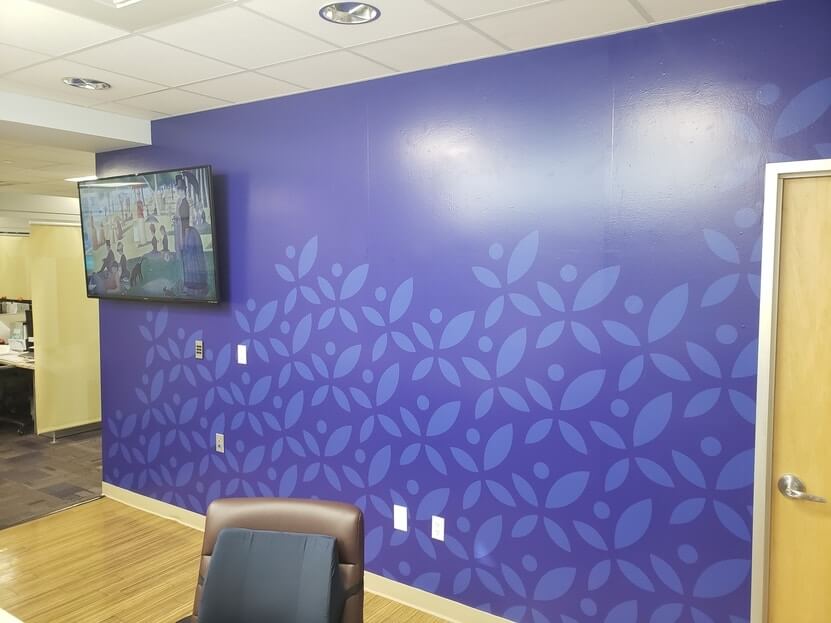If you’ve been following along, you know that the patient experience is what patients encounter throughout every aspect, touchpoint, and interaction of their healthcare journey. From the moment someone first hears about your brand — whether from your website, a paid ad, or an organic social post — their healthcare journey and experience begins. Yet, knowing this doesn’t protect healthcare providers from overlooking some of the simplest places to improve their patients’ experience. One such place is the waiting room.
The Importance of the Patient Experience
Before thinking about all the different ways you can improve the patient experience, it’s important to understand why you’re doing it in the first place. In the current technological age, the opinion of your patients is worth its weight in gold. That’s because 91% of people trust online reviews, and word of mouth continues to be one of the most effective marketing tools to gain new business. On the opposite end of the spectrum, negative reviews can turn new patients away, and disgruntled patients hurt your retention and are more likely to tell people to avoid your business — impacting your revenue.
5 Tips to Enhance Your Waiting Room & Improve Your Patients’ Experience
1. Incorporate Branding
You’re already investing a portion of your marketing budget into refreshing and maintaining your branding (or at least you should be). By continuing that brand into your waiting room, your patients instantly know they’re in the right place. This can look different for each business depending on your company’s culture, practice, and branding guidelines. At a minimum, you should include signage in your brand colors and include your logo wherever it makes sense.
If you offer infusion therapy, this could include providing branded materials for your patients to take with them — including tri-folds that explain their treatment and prepare them for the appointment. If you’re a home health care company, you could include videos of caregivers caring for patients on TV screens in the waiting room. Each of these examples provides value to the person in the waiting room and reinforces your brand story.

2. Virtual Waiting Room
As a patient, if you’re not sick, the last thing you want to do is share a space with someone who is. As a healthcare provider, you may be used to several people around you sniffing and sneezing all day, but for the average patient, each sniff is a reminder that their health is at risk.
Adopting a virtual waiting room gives your patients the flexibility they prefer by allowing them to check in from your parking lot. It tells you that your patient has arrived but allows them to wait in an environment where they feel safer and more in control — such as their car. Additionally, it frees up your staff at the front desk to focus on phone calls and paperwork since they have fewer people to check in, and all new patient documents can be filled out online.
3. Real-Time Queue System
If your practice takes both physical and virtual appointments, it can be helpful to establish patient expectations by listing the order of patients in a queue. This list can be live-streamed on a TV in the waiting room and should include a time estimate.
Depending on the software solution adopted, you can customize the solution to use your branding. This tells the patient waiting in your waiting room how many people are in front of them and about how long they can expect to wait. And, with 88% of patients wishing they knew how long they’d be waiting from the moment they checked in, this can set realistic expectations from the start.
4. Minimize Wait Times
One of the biggest pain points for your patients is long wait times between the moment they check-in and the moment a nurse collects them from the waiting room. While implementing a queue system can help set expectations for how long they may be waiting, the patient experience will always end poorly if their wait time is significant — with some patients walking out the door without being seen.
Minimizing wait times requires identifying what’s holding up your process. Are you sending documentation to patients to fill out beforehand, or is it all done in person? Do you have a policy for no-shows or late arrivals? Are you texting or emailing reminders to your patients to help them show up for their appointments on time? By considering these things beforehand, you can help minimize how long a patient waits upon arrival.
5. Hire Additional Staff
Your front desk staff is often the first people your patients interact with when visiting your practice. If your staff is overwhelmed, short-staffed, or burnt out, then your patients can pick up on that. Giving your staff extra assistance is crucial to providing them with the relief they need to best represent your brand. Nowadays, it’s not enough to post on job boards and wait for applications to come through. The hiring pool is smaller, and finding qualified talent that fits in with your team is harder than ever.
By leveraging a proprietary database and implementing the right hiring strategy, you can hire exceptional people and get your staff the relief they need. Whether you’re looking for RNs and LPNs or to fill a more specialized role, we can put your brand in front of quality candidates.
